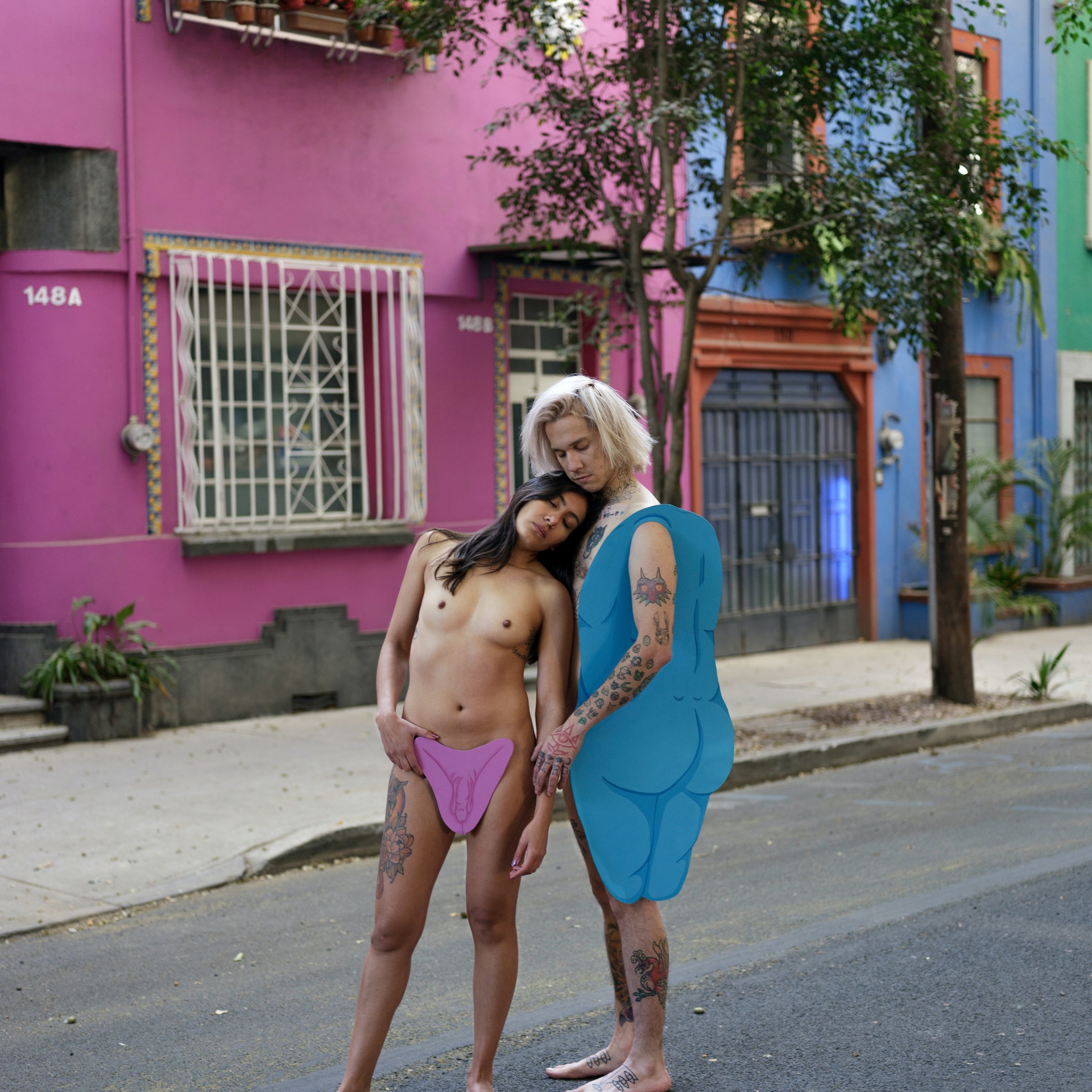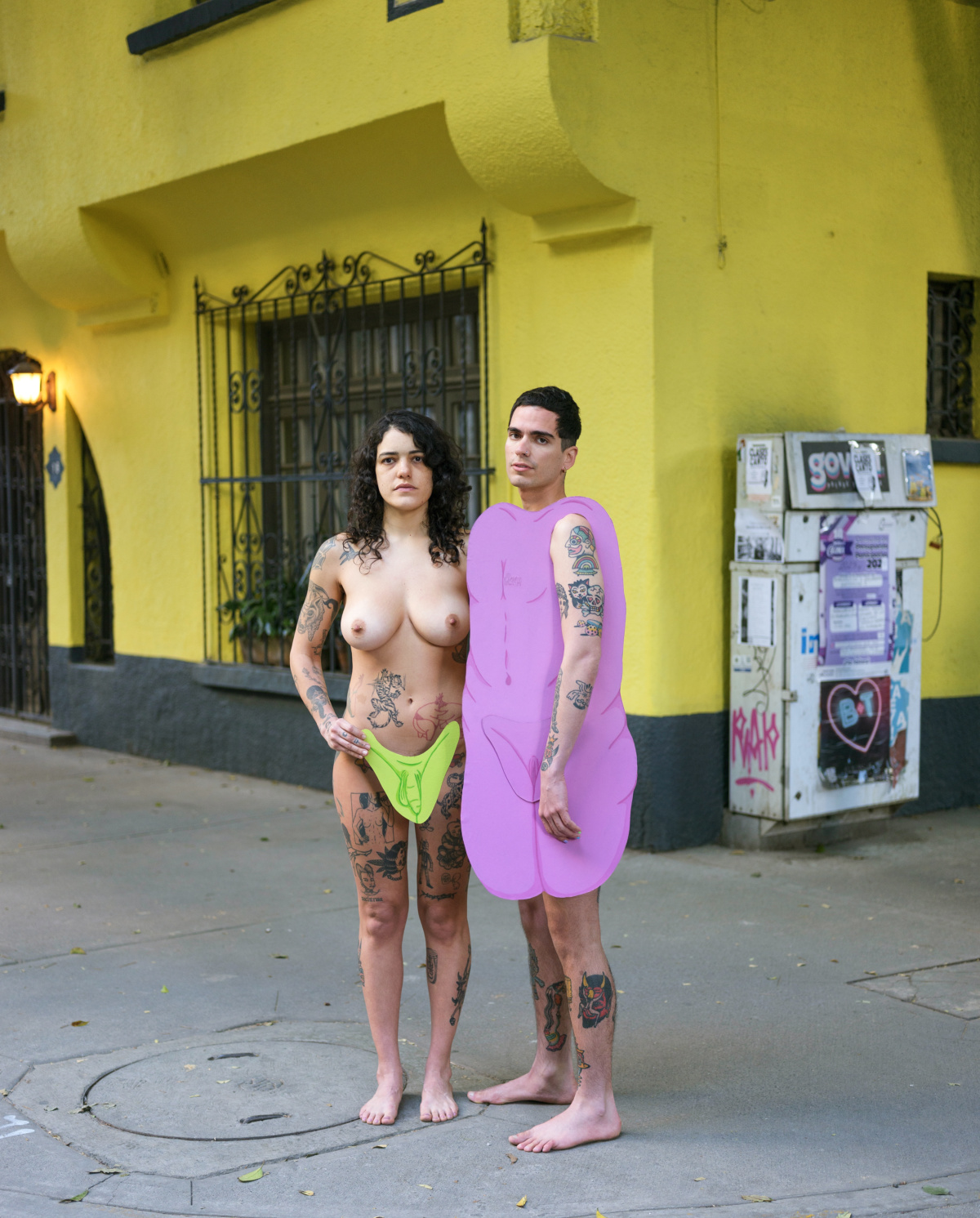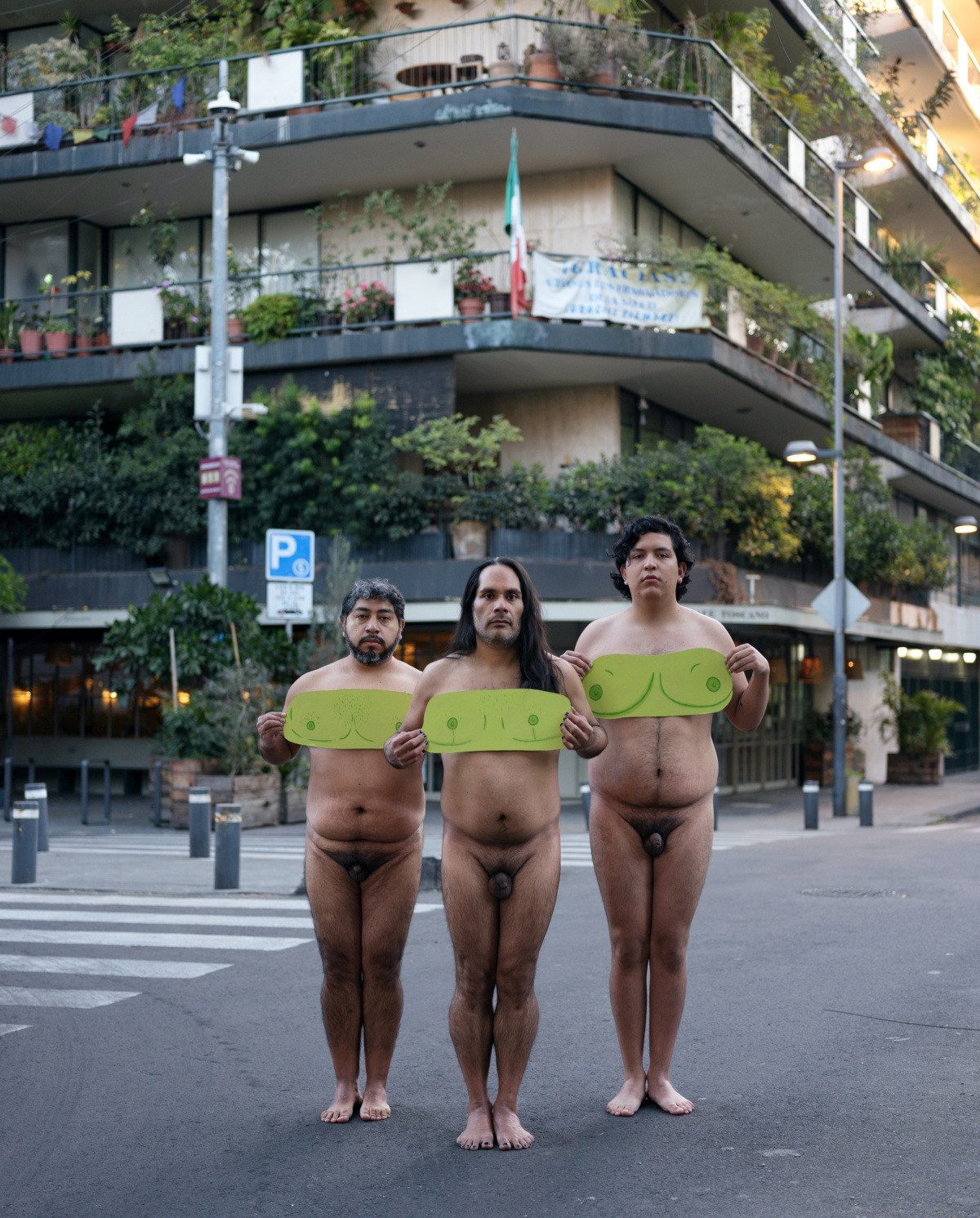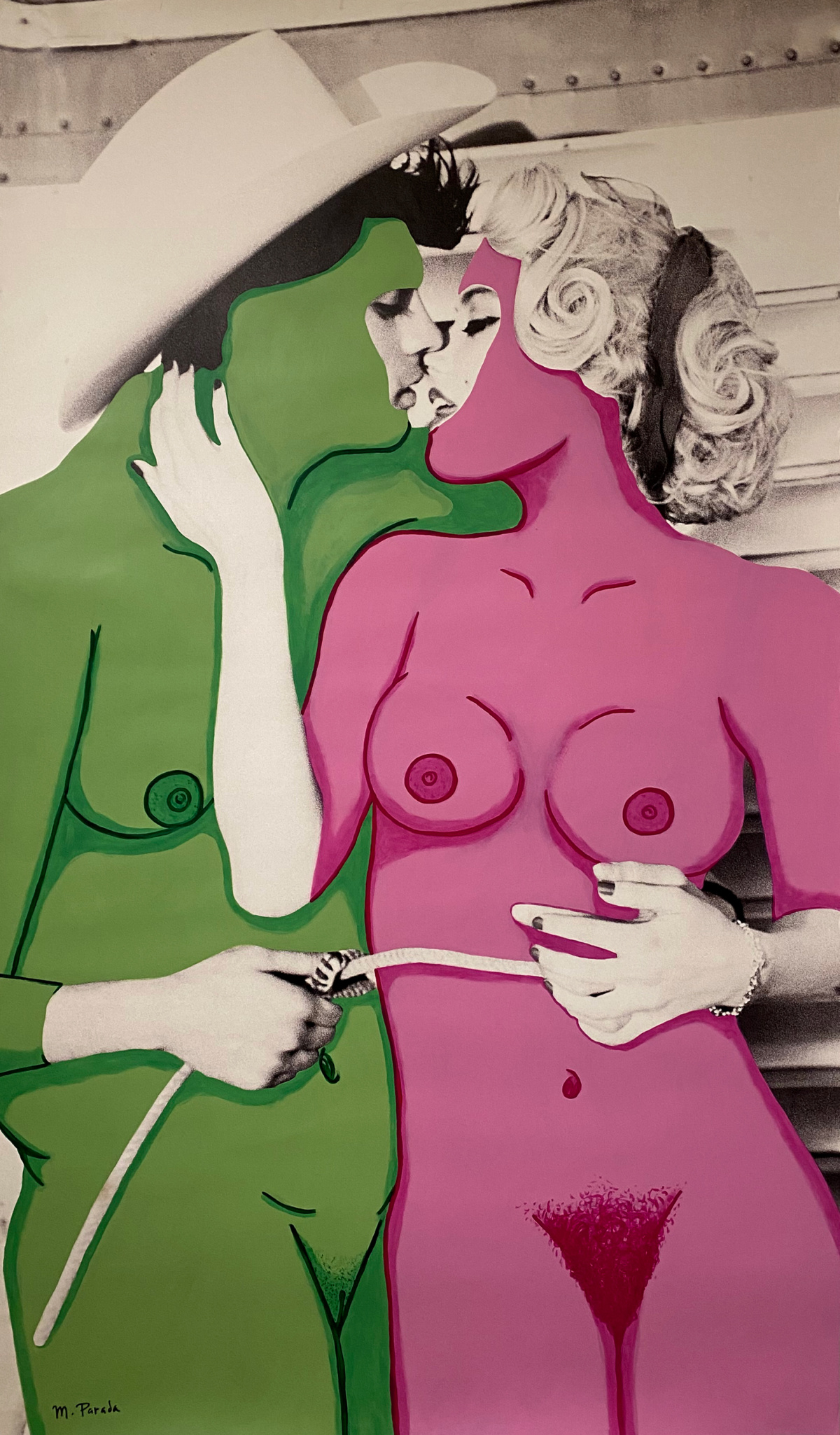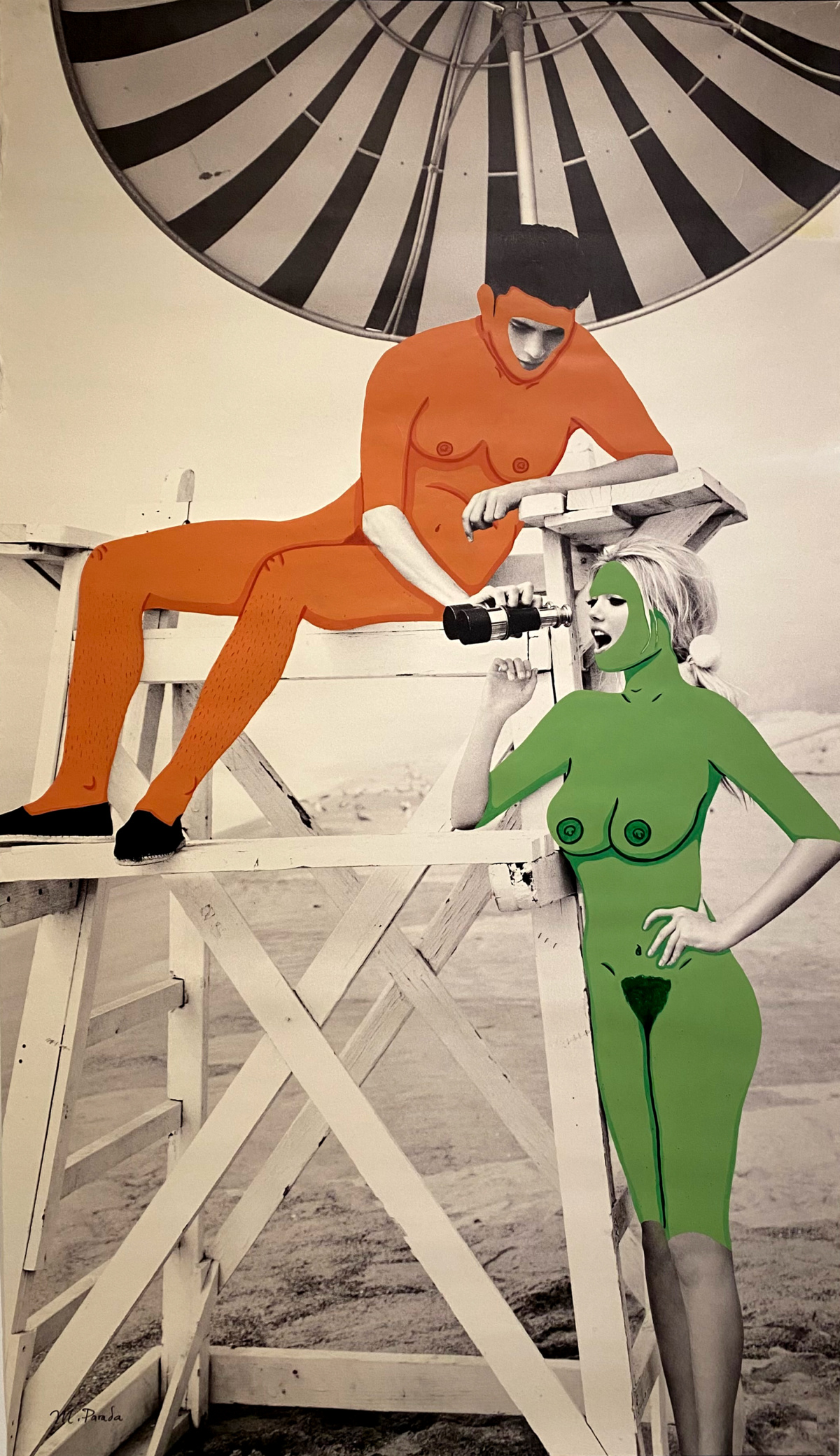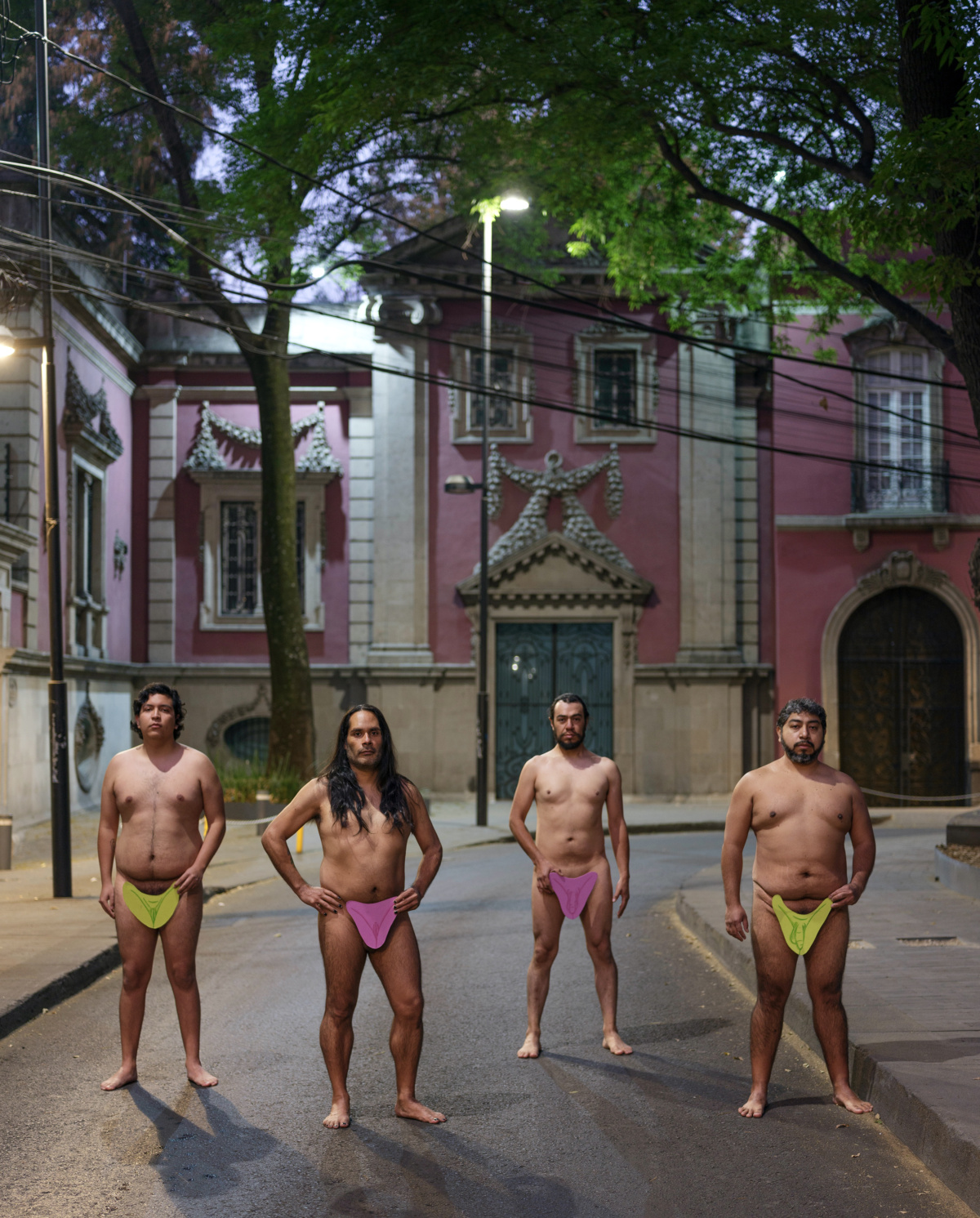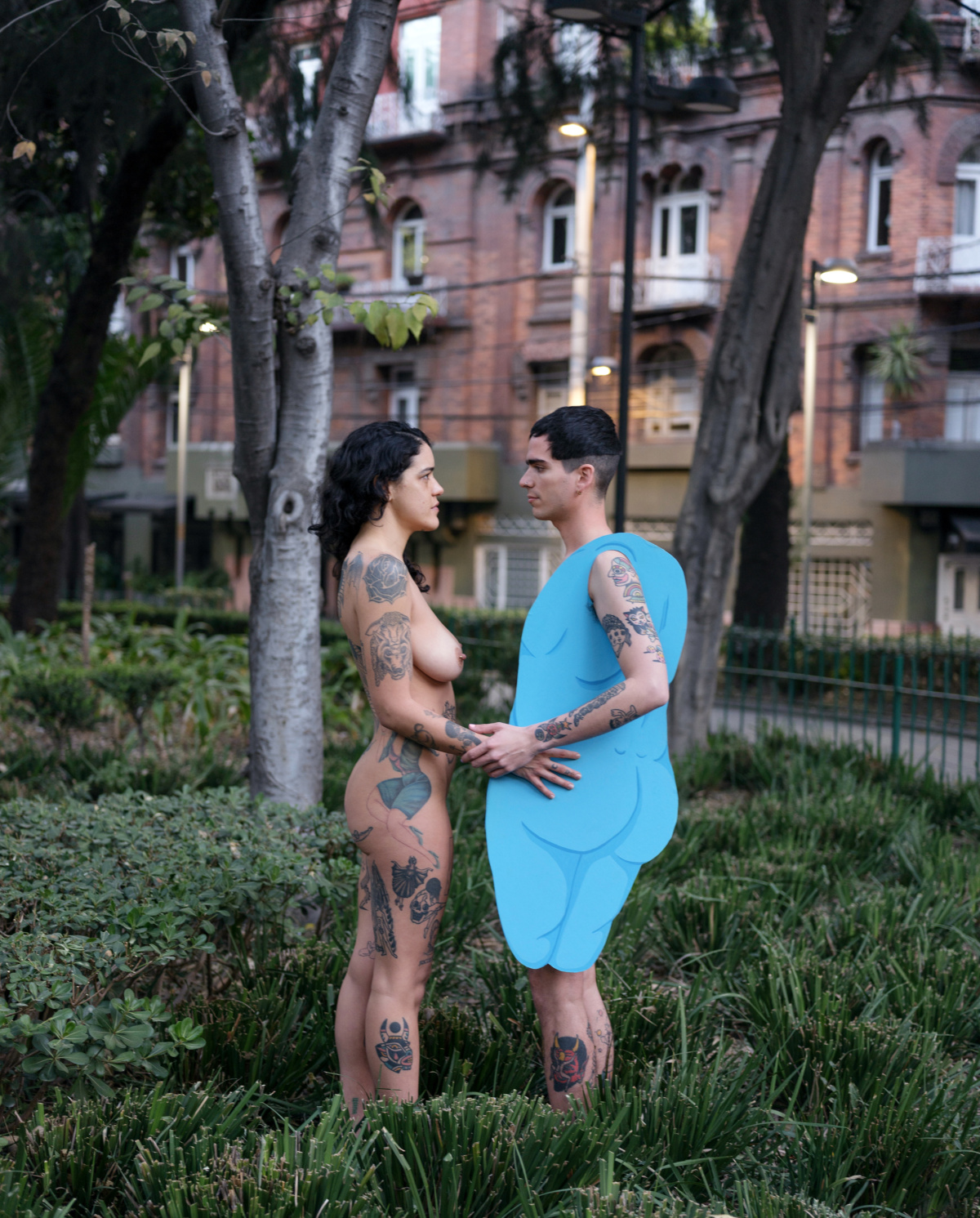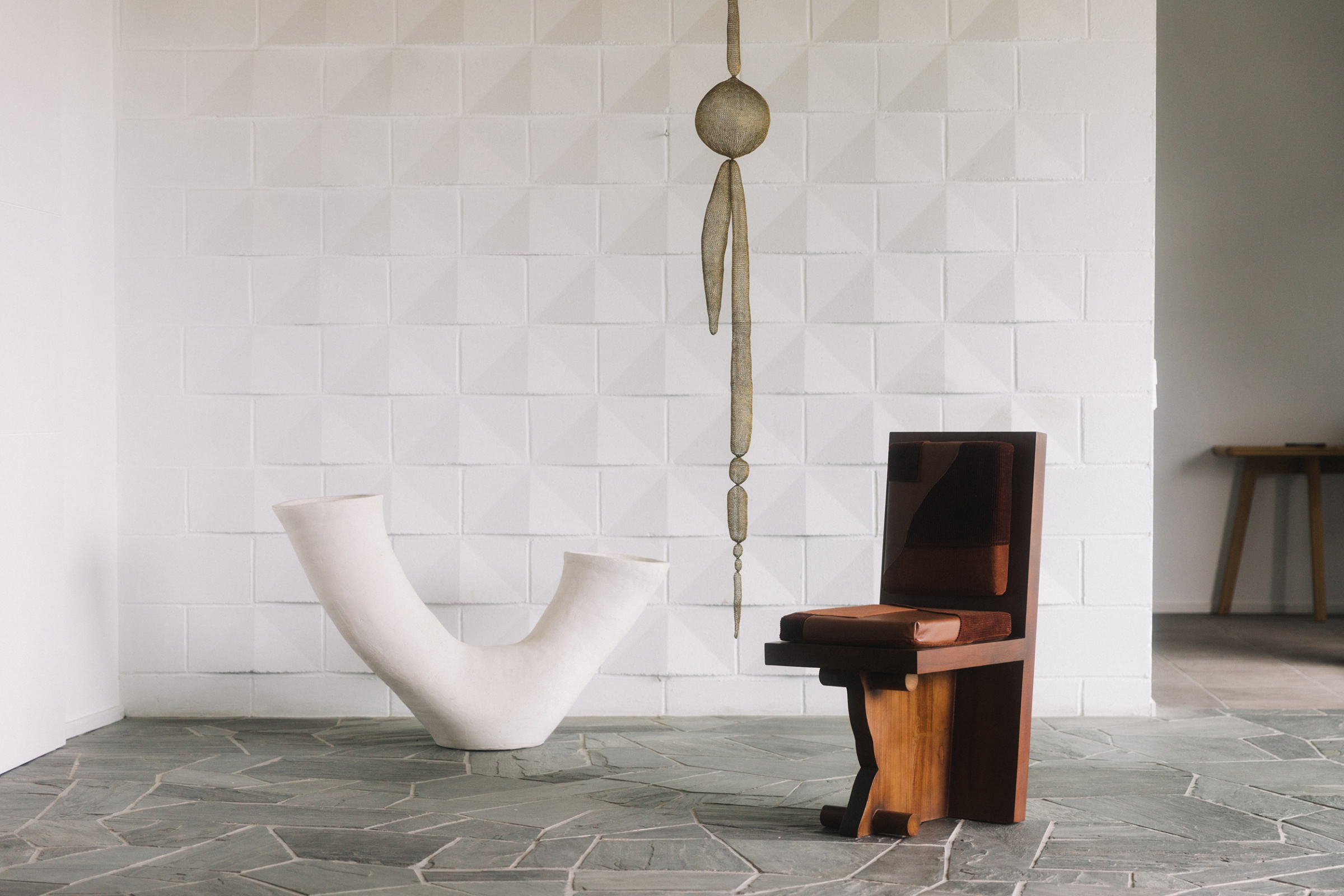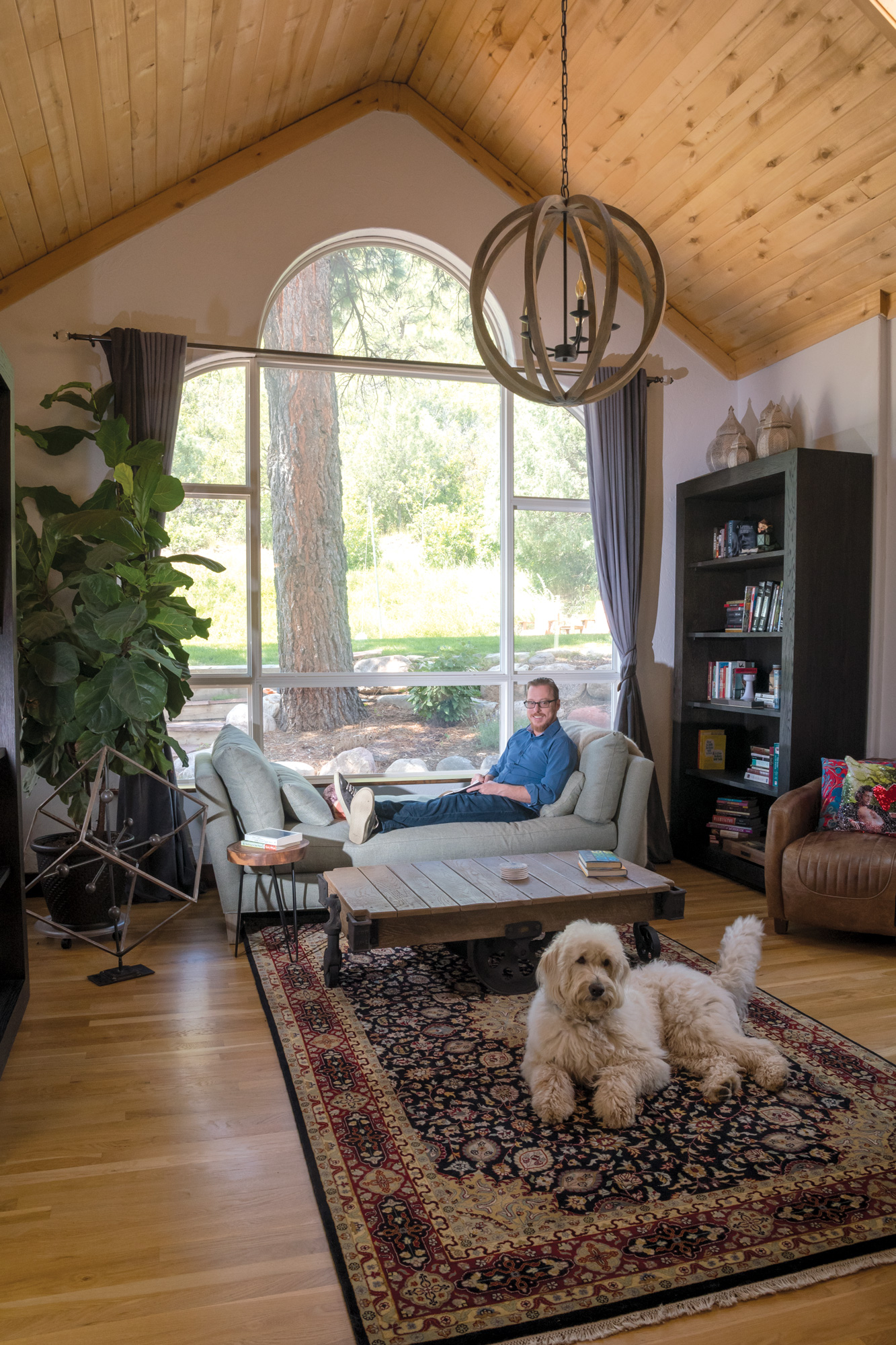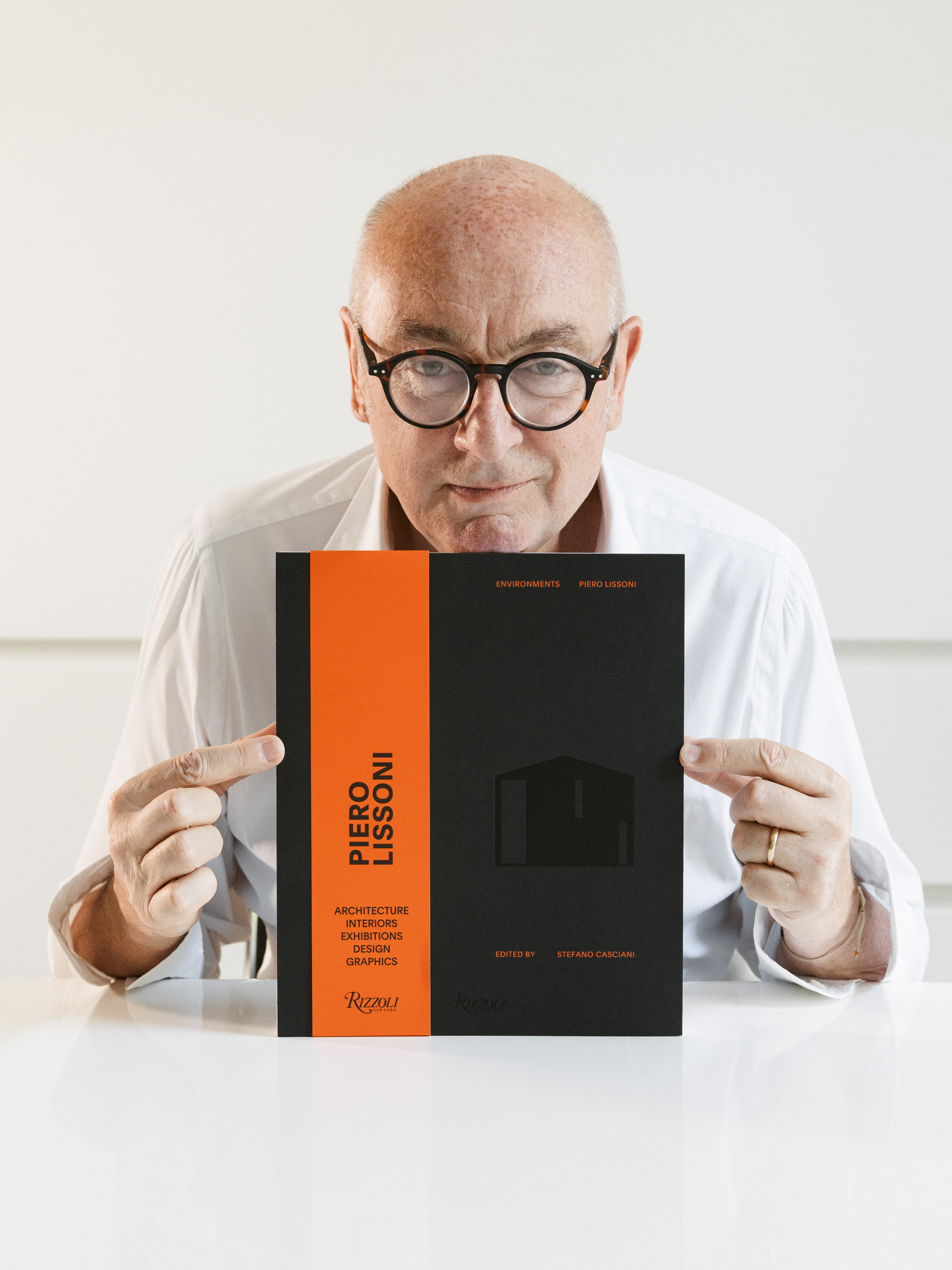Monica Parada likes to break pre-established societal norms. The San Juan, Puerto Rico–based artist discovered large rolls of old fashion ads in the garbage when she was struck with an idea for a work that would later become the basis of an interactive collaboration with American photographer Spencer Tunick, perhaps best known for his work shooting large groups of nude people. “This is pure treasure,” she thought. She took the ads home and began to paint with color and play with gender against a series of old black and white photos. “Everything is beautiful, and anything is possible,” she says.
When Spencer saw Monica’s work, he wanted to bring the art to life. The two collaborated with real people all over Mexico City, combining his street photography style with her playful pieces that invited subjects to mix and match body parts and types with painted cutout cardboard pieces. “People can be who they want to be,” Spencer says. The large-format photographs became the basis for a Zona Maco art fair exhibit called Corpus Meum.
- Corpus Meum, Mexico City, 2023 (Collaboration with Monica Parada) Courtesy of REM Project, Puerto Rico
- Corpus Meum, Mexico City, 2023(Collaboration with Monica Parada) Courtesy of REM Project, Puerto Rico
“It was very interesting bringing out this thing I’ve been doing for years—intervening old photographs and old magazines—and seeing it in the real world. It was very surreal,” Monica says. “I also feel a responsibility as part of the LGBT+ community. It’s something that should always be talked about but right now there are so many things happening politically, it’s important to speak up.”
Spencer started working with individual nudes in the street in 1992, immersing himself on weekends at sunrise—gathering friends and friends of friends, people he met on the street and in cafes and bookstores. “I often would have photographs in my wallet, contact sheets of my work, and I would approach people and see if they wanted to get up early on a weekend and have a photographic experience on the streets.” It was the start of his America Zone series and work he continues to find very therapeutic.
- Monica Parada is a big collector and loves working with old photos, magazine pages, and other found objects.
- Courtesy of Monica Parada
When Spencer saw Monica’s work, which also celebrates the human body, he thought it could be beautiful to blend their artistic representations. “I saw her opaque coverings of found black and white artwork where she paints over the artwork and transforms gender and I thought she had a very good hand. She’s a good painter and I felt that maybe she could make these come alive in a way,” he says.
Monica says she’s always been interested in the body, pushing the norms of what society says is acceptable, and they both wanted to celebrate all people as part of their collaboration. Spencer photographed both cis and nonbinary people—friends of friends, artists, small business owners, and others—all over Mexico City with Monica’s work. They wanted to capture a diverse group of people and invite them to transform their sex and gender into a fluid representation of possibilities, Spencer says. “There was no set answer. It was mysterious for some—putting male genitals in front of female presenting bodies and the exact opposite. For me it was a positive representation of how I feel we should be allowing and not interrupting the natural state of people representing themselves in the world. People can be who they want to be,” he says.
- Corpus Meum, Mexico City, 2023 (Collaboration with Monica Parada) Courtesy of REM Project, Puerto Rico
- Corpus Meum, Mexico City, 2023 (Collaboration with Monica Parada) Courtesy of REM Project, Puerto Rico
The photos as well as Monica’s pictorial and sculptural work went on to be part of an interactive gallery exhibit with REM Project in San Juan—something they both cherish. Monica says it’s important to continue to challenge pre-established gender roles by questioning the conventions of feminine and masculine. A basket of body parts at the exhibit invited people to try on whatever they’d like, undermining the stereotypes that cross gender identity in the Western world.
“You normally can’t touch the artwork,” Monica says. She and Spencer invited people to have fun with the art. “I do have some pieces where people have to place their faces inside of a vulva,” she laughs. “Some people will go straight for it and other people are like, ‘No way am I going to do that.’”
A version of this article originally appeared in Sixtysix Issue 10 with the headline “Monica Parada.” Subscribe today.
